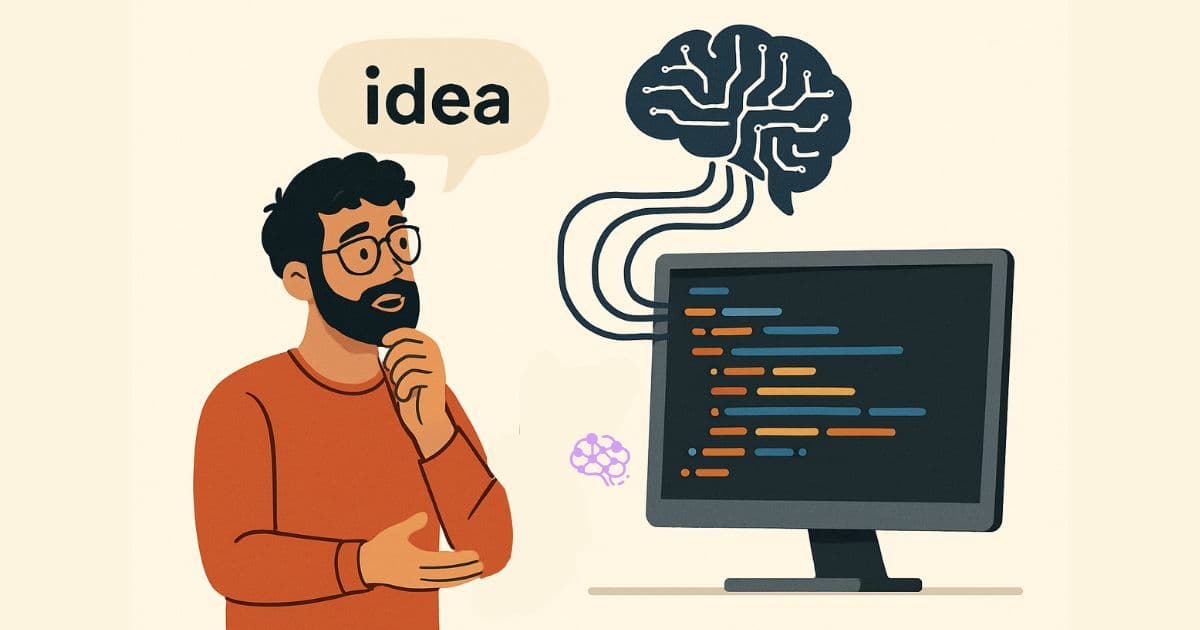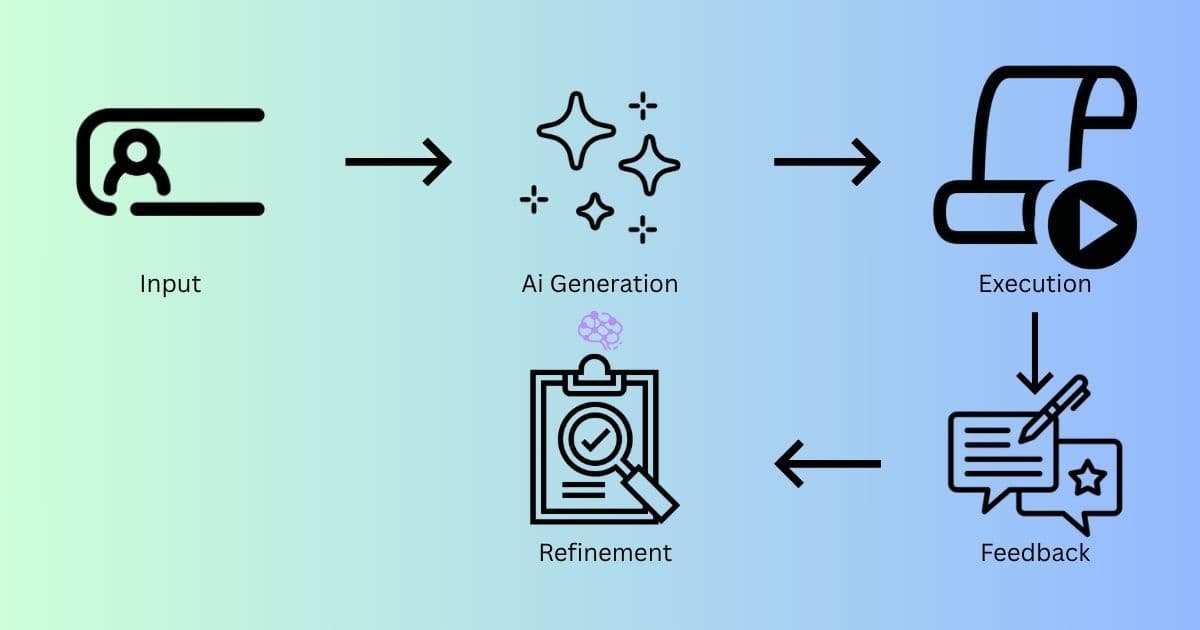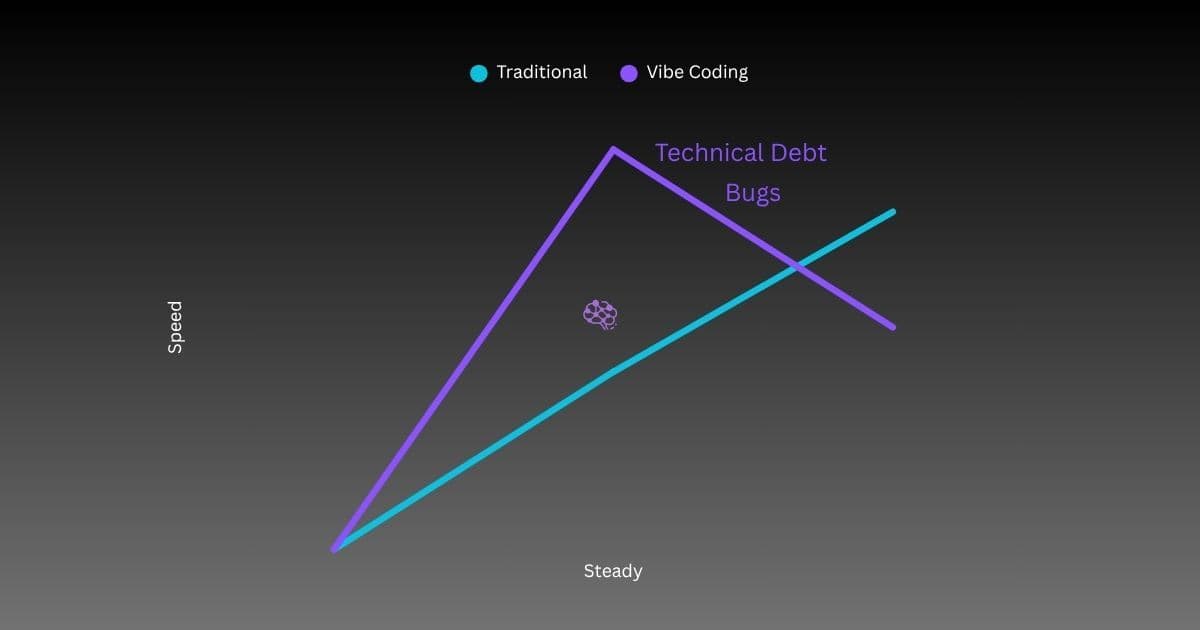
Imagine this: you have an idea for a web application. Instead of meticulously opening your IDE, creating files, and typing out boilerplate HTML, CSS, and JavaScript, you simply describe what you want. "Build me a landing page for a new productivity app," you say. "The design should be clean and modern, with a hero section, three feature blocks, and a contact form at the bottom." Moments later, functional, stylized code appears, ready for refinement. This isn't a scene from a sci-fi movie; it's the emerging reality of vibe coding.
This new paradigm, where developers use natural language to guide AI in generating software, is rapidly moving from a niche experiment to a mainstream practice. Coined by AI researcher Andrej Karpathy in early 2025, vibe coding describes a workflow where the developer focuses on the high-level goal—the "vibe"—while an AI handles the line-by-line implementation. It represents a fundamental shift in the human-computer relationship, turning the coding process into a conversation rather than a monologue.
But as with any disruptive technology, a central question arises: Is vibe coding a genuine revolution in productivity and creativity, or is it a dangerous illusion that encourages superficial understanding and creates brittle, insecure software? This article delves deep into the world of vibe coding to separate the hype from the reality. We will dissect its underlying mechanisms, analyze its true impact on productivity, explore its most effective real-world use cases, and make the case for why, in an age of AI, the human engineer is more indispensable than ever.
What is Vibe Coding, Really? A Deeper Definition
At its core, vibe coding is a style of software development that leverages artificial intelligence to translate natural language prompts into functional code. It moves the developer's focus from syntactical details—the placement of semicolons and brackets—to the "big picture" or the intended outcome of the application. You describe the what, and the AI figures out the how.
This process is far more than a supercharged autocomplete. It's an improvisational and iterative partnership between the human and the machine. The workflow typically follows a tight, conversational loop:
- Input & Interpretation: The developer provides a prompt in plain English, describing a feature, a design, or a piece of logic. This can range from a simple request like "create a Python function to parse a CSV file" to a complex command like "generate a React component for a user login form with OAuth integration."
- AI Code Generation: Advanced Large Language Models (LLMs) like GPT-4 or Google's Gemini analyze the prompt, drawing on vast datasets of existing code to generate the required components—HTML, CSS, backend logic, or database queries.
- Execution & Preview: The generated code is often run in a sandboxed environment or directly in the developer's IDE, providing a real-time preview of the result.
- Feedback & Refinement: The developer reviews the output. Perhaps the layout is wrong, the logic has a bug, or the style doesn't match the project's design system. They provide corrective feedback in natural language: "Make the button larger and change the color to blue," or "Add error handling for invalid user input." The AI refines the code based on this feedback.
This loop of input, generation, testing, and refinement is the engine that drives vibe coding, allowing for incredibly rapid iteration cycles

This new way of working has been made possible by a confluence of technological advancements. The maturity of LLMs, which now possess a sophisticated understanding of both human language and programming languages, is the primary enabler. Furthermore, the seamless integration of these models into developer tools like GitHub Copilot and dedicated AI-native IDEs such as Cursor has brought vibe coding directly into the established workflows of engineers.
The Productivity Paradox: 10x Speed vs. 10x Risk
The most tantalizing promise of vibe coding is a massive leap in developer productivity. Startups in Y Combinator's Winter 2025 cohort reported that up to 95% of their codebases were AI-generated, allowing teams of 10 to achieve what once required 50 to 100 engineers. This isn't just about writing code faster; it's about fundamentally changing the economics of software creation.
The Gains: Where Vibe Coding Delivers a Genuine Boost
When applied to the right tasks, vibe coding can feel like a superpower. The productivity gains are most significant in several key areas:
- Rapid Prototyping and MVPs: This is the quintessential use case. An entrepreneur can now take an idea for a Minimum Viable Product (MVP) and build a functional, interactive prototype in a matter of hours or days, not weeks or months. This dramatically lowers the cost and risk of testing new business ideas, allowing for rapid iteration based on real user feedback.
- Automating Toil and Boilerplate: Every developer is familiar with the tedious, repetitive tasks that consume a significant portion of their time. Vibe coding excels at automating this drudgery. It can instantly generate configurations for CI/CD pipelines, create Infrastructure as Code (IaC) templates for tools like Terraform or Kubernetes, and write standard backend features such as user authentication or API endpoints. This frees up developers to focus on higher-value, more creative problem-solving.
- Accelerated Learning and Onboarding: For engineers needing to switch between different programming languages or frameworks, AI assistants act as an always-on, interactive tutor.Instead of spending days poring over documentation, a developer can ask, "How do I achieve this pattern from Django in Ruby on Rails?" and receive an immediate, context-aware answer. This drastically shortens learning curves and onboarding times.
- Enhanced Design and UI Development: Vibe coding is particularly effective at generating front-end code. A developer can describe a visual layout, and the AI will produce the corresponding HTML and CSS. This allows for incredible design flexibility and rapid experimentation with different user interfaces, bridging the gap between design and implementation.
The Perils: The Hidden Costs of AI-Generated Code
However, this newfound speed comes with significant risks. The very ease of vibe coding can mask underlying problems, creating a "productivity mirage" where speed is achieved at the cost of quality, security, and long-term maintainability.
- The Illusion of Understanding: Perhaps the greatest danger is what AI researcher Simon Willison calls the act of accepting AI-generated code without fully understanding it. When a developer simply "vibes" their way through a project, they risk creating a codebase that no one on the team truly comprehends. This leads to systems that are brittle, difficult to debug, and nearly impossible to maintain or extend over the long term.
- Embedded Security Vulnerabilities: AI models are trained on vast amounts of public code, including code with security flaws. If not carefully reviewed, AI-generated outputs can introduce significant vulnerabilities. Common examples include creating overly permissive IAM roles in cloud configurations, writing code susceptible to SQL injection, or even hardcoding sensitive secrets directly into scripts. Without a vigilant human expert reviewing the code, vibe coding can be a fast track to a security breach.
- Architectural Myopia and Technical Debt: While AIs are good at solving contained, specific problems, they often lack the high-level, strategic understanding required for sound software architecture. An AI might generate a solution that works for the immediate request but fails to consider scalability, maintainability, or its interaction with the broader system. This "architectural myopia" can lead to a rapid accumulation of technical debt, creating a tangled mess that will eventually grind development to a halt.
Atrophied Skills and Stifled Innovation: An over-reliance on AI to solve problems can prevent developers from building their own fundamental skills in algorithmic thinking, data structures, and system design. The "vibe" that feels right to the AI may not be the most performant or elegant solution. True innovation often comes from a deep understanding of first principles, something that can be stifled if developers only ever operate at a high level of abstraction.

Vibe Coding in the Wild: A Guide to Practical Application
The key to harnessing the power of vibe coding while mitigating its risks is to understand where it excels and where it should be used with extreme caution. It is not a one-size-fits-all solution.
Where Vibe Coding Shines: Low-Risk, High-Reward Scenarios
- Marketing and Design-Centric Projects: The absolute ideal use case is for projects where visual appeal and speed are paramount, and the security stakes are low. This includes creating marketing landing pages, interactive product demos, and promotional microsites. These projects typically don't handle sensitive user data, making them a safe and effective playground for AI generation.
- Internal Tools and Scripts: Building tools for internal use—a script to automate a report, a simple dashboard to track metrics—is another sweet spot. The audience is small and trusted, and the cost of a bug is low.
- Prototyping and Concept Validation: As mentioned earlier, using vibe coding to build MVPs and proofs-of-concept is a game-changer for innovation. The goal here isn't to create production-ready code, but to build something tangible enough for user testing, investor demos, or internal feedback. The prototype serves its purpose and can be thrown away and rebuilt properly if the idea is validated.
- Personal Projects and Hobby Apps: Vibe coding has dramatically lowered the barrier to creating for fun. It's a fantastic tool for building personal websites, experimental games, or small utility apps that would have previously required a prohibitive amount of time and effort.
Where to Proceed with Caution: High-Risk, Complex Domains
- Core Business Logic and Proprietary Algorithms: The complex, domain-specific logic that constitutes a company's "secret sauce" should not be delegated to an AI. This code requires deep expertise, careful design, and rigorous testing that is beyond the current capabilities of LLMs.
- High-Security and High-Compliance Systems: Any system that handles sensitive data—such as financial transactions, personal health information (PHI), or personally identifiable information (PII)—requires absolute human oversight. While AI can assist, every line of code in these systems must be understood, reviewed, and validated by a human expert to ensure security and regulatory compliance.
- Large-Scale, Existing ("Brownfield") Systems: AI tools often struggle with the vast context of a large, mature codebase. They lack a persistent, long-term memory of the system's history, its architectural decisions, and its technical debt. Attempting to "vibe" a new feature into a complex brownfield project without a deep understanding of that project is a recipe for disaster.
- Performance-Critical Code: While an AI can generate functionally correct code, it is often not optimized for performance. Systems that require extremely low latency, high throughput, or efficient memory usage still depend on the nuanced skills of an experienced engineer who can profile, debug, and hand-tune critical code paths.
The Indispensable Human Engineer in the Age of AI
The rise of vibe coding does not signal the end of the software engineer. Rather, it marks a profound evolution of the role. The focus is shifting away from the mechanical act of writing code and toward a set of higher-level skills that are uniquely human. The most effective engineers of the AI era will be those who master this new skill set.
Beyond the Prompt: Critical Skills for the Modern Developer
- Masterful Prompting and Clear Communication: The ability to articulate complex technical requirements in clear, unambiguous natural language is the new foundational skill. This is "prompt engineering," but it's more than just a buzzword. It's about a deep understanding of both the problem domain and the AI's capabilities, allowing the developer to guide the AI toward the desired outcome with precision.
- Unyielding Critical Evaluation: The most crucial skill in the vibe coding paradigm is the ability to critically assess AI-generated code. As Karpathy notes, it's now more important to be a good code reviewer than a good code writer. This involves scrutinizing the output for correctness, efficiency, maintainability, and, most importantly, security flaws. The default mindset must shift from "trust but verify" to "distrust and rigorously validate."
- Holistic Systems Thinking and Architecture: More than ever, the human's role is that of the architect. While the AI can lay the bricks, the human must design the blueprint. This involves making critical decisions about how software components interact, planning for scalability and resilience, and making trade-offs between competing concerns (e.g., speed vs. reliability). The AI operates on a local level; the human must maintain the global vision.
- Deep Debugging and Root Cause Analysis: AI assistants can be helpful for fixing superficial bugs, but they often struggle with deep, systemic issues. When a complex problem arises from the interaction of multiple components, it still takes a human with intuition, experience, and powerful debugging skills to trace the issue to its root cause.
- Domain Knowledge and Business Context: An AI does not understand why a piece of software is being built. It has no concept of the business goals, the target users, or the competitive landscape. The human engineer is the essential bridge between the technical implementation and the business problem it's intended to solve. This context informs every architectural decision and feature trade-off.

Conclusion: The Vibe is Real, but Expertise Gives It Substance
So, is vibe coding hype or reality? The answer is both. The hype is the seductive idea that programming will become a fully automated process, where anyone can build complex, production-grade software simply by describing it. This remains a fantasy. The reality is that vibe coding is a powerful, paradigm-shifting tool that can dramatically accelerate development, lower the barrier to entry, and free engineers from tedious work.
It is not a replacement for human expertise but a powerful amplifier of it. When wielded by a skilled engineer who knows when to use it, how to guide it, and how to critically evaluate its output, vibe coding is a transformative force. But when used carelessly, as a shortcut to avoid deep thinking, it becomes a dangerous engine for producing technical debt and security risks.
The future of software development isn't a choice between human coders and AI coders. It's a symbiosis. The most successful teams will be those that embrace AI as a collaborative partner—a "junior partner" that can handle the grunt work, but which requires constant guidance, oversight, and architectural direction from its senior, human counterpart. The role of the engineer is being elevated, not eliminated. We are moving from being bricklayers to being architects, from being writers to being editors, and from being solo creators to being conductors of a powerful human-AI orchestra. The vibe is real, but it is the bedrock of human knowledge, critical thinking, and systems design that gives it substance and turns it into something truly valuable.

